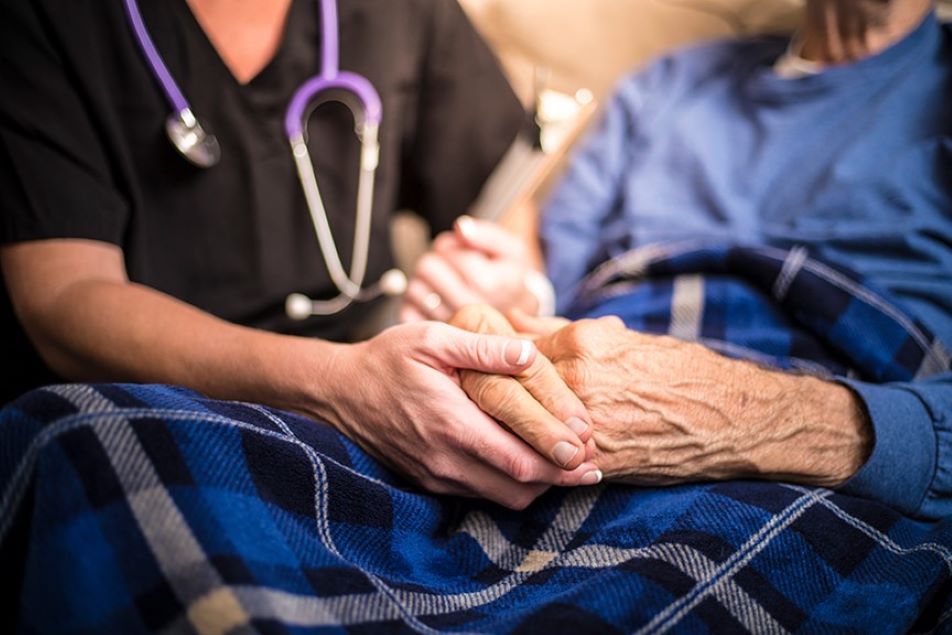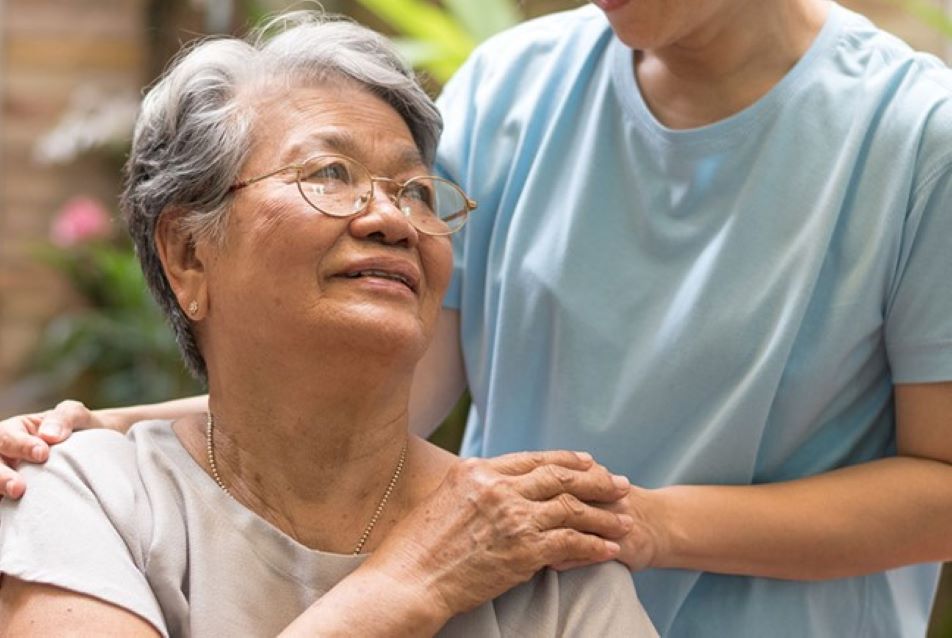
This post was written by Kayla Reish, RN, MSN, hospice clinical supervisor, Parkview Home Health & Hospice.
A hospice team enters a person’s life during some of the most challenging and precious days they will ever experience. With a focus on comfort and quality of life, Parkview Hospice provides care to terminally ill individuals and their families during their final days, weeks or months. You may not realize it, but hospice care can happen in a hospital, a nursing facility, or in the comfort of a patient or family’s home. Each setting has its benefits and challenges. And, like the beginning of life, the end of life often brings many sleepless nights and unpredictable days. Fortunately, the hospice team is prepared to deal with these ups and downs. Each team member is an expert in their field and a specialist in end-of-life care. To fully understand the intricacies of this invaluable team and its members, let’s take a closer look at who they are and what they do.
First steps
For many people considering hospice, the first team member they meet is their liaison. This person works closely with the inpatient care team, nursing home staff and doctor’s office to connect those needing care with Parkview Hospice. The liaison works tirelessly to prepare and enable patients to leave the hospital so they can spend their last months or days with family and friends. This preparation and coordination can take hours, but with the help of a liaison, patients can procure healthcare equipment like oxygen tanks, hospital beds and request medications from doctors. The liaison also reports back to the care team and educates the family on what comes next.
The admitting nurse is the next team member a hospice patient typically meets. When patients meet with this team member, they are encouraged to involve whatever family and friends they want in the admission process. For instance, a few months ago, I had the opportunity to sit in on this process with a patient. The admitting nurse and three of the patients’ adult children sat in the living room while another adult child joined via speakerphone. Because of visitor restrictions and their work obligations, this was the first time most of them had the opportunity to speak directly with a healthcare team member about what was going on with their mother. It meant so much to them to ask their questions and have a knowledgeable hospice team member give them the answers they craved. I lost count of the times one of the sons said, “That makes sense now.”
Finally, our hospice physicians are like the coaches of the team - always accessible so they can meet a patient’s needs in real-time. In most cases, they gather every other week with the entire care team to discuss each patient and develop a care plan for the next two weeks.
Nurses and home health aides
Unsure of how this all fits together? Let’s walk through the process as if it were a football game. The nurses are the quarterbacks on the field, taking the physician’s playbook and implementing it. Each hospice patient is assigned a primary nurse, or case manager, who walks alongside them and their family throughout the entire hospice process. The case manager visits the patient regularly, assessing and managing physical and emotional needs. As a hospice case manager, one of my favorite parts of the role is partnering with families in the home to empower them to care for their loved ones.
A great example of this was when I placed a foley catheter for the comfort of one of my patients who could no longer get out of bed. When I told her daughter that I would teach her how to empty it, her daughter’s eyes grew wide as she exclaimed, “I can’t do that!” But, she agreed to give it a try while I coached her through it. Eventually, her “I can’t” changed to an “Ok, I think I can.”
Then, like the nurse, the hospice home health aides assist the family with the practical side of caring for someone extremely ill at home. They provide physical care like bathing and dressing and are another set of eyes and ears for patients and their loved ones. One patient’s wife shared how much they appreciated their home health aide. The patient had advanced dementia, and because of his memory issues, he didn’t respond well to new people. So, the aide took her time to build a relationship with him. Now, not only is the patient not anxious when she arrives, he’s excited to see her.

Additional layers of support
The nurse case manager and aide work closely with the medical social workers to ensure the patient and their family have everything they need. And honestly, the medical social workers are much like Mary Poppins. No matter what the moment needs, they can pull it out of their bag. They work closely with nursing homes and private caregiving agencies to ensure all family members have the physical support they need. In the past, they’ve faced off with electrical companies who were about to turn off a patient’s electricity for a late bill. They often coordinate meal delivery services and food banks to meet the patient and loved one’s needs, especially if people cannot work. One social worker even helped a family with a significant language barrier reach out to their landlord to get some much-needed repairs in their apartment.
Additionally, both the social worker and chaplain have vital roles in the hospice process and grief support. Grief isn’t just something that happens after the loss; it begins as soon as people realize that it is coming. It can express itself in many ways, including anger, sadness, denial, bargaining, acceptance and many other emotions. These are not stages of grief but phases that people constantly move in and out of.
Typically, the chaplain and bereavement team visit the patient and family members during their journey through hospice, helping them deal with these fluctuating feelings and find peace within their specific situation. Then, after the hospice patient passes away, they continue to support families over the next year (and beyond) through phone calls, cards and community support groups.
Parkview volunteers
Our Parkview Hospice Volunteers provide another layer of support to hospice families. These amazing individuals give their own time to visit with patients, walk their dogs, make blankets or bears for them, and so much more. A group of military veterans host pinning ceremonies to honor those hospice patients who have served their country. And, despite COVID-19, the entire team has worked together to keep the pinnings going during the pandemic. For one gentleman, a Korean War veteran and hospice patient living in a nursing facility with strict visitor restrictions, Parkview Hospice hosted a virtual pinning. The volunteers, patient’s family, chaplain and social worker all met through a virtual platform. The case manager and volunteer worked together to present the patient with a pin and other items to honor his service.
Around the clock accessibility
The hospice team is available to patients and families 24/7. The night and weekend nurses have the same specialized training as the case managers and admission nurses. Anytime the family calls, they can speak directly to a hospice nurse, and that nurse will come to their home or nursing facility if needed. This reminded me of one Christmas when I received a call from a patient’s husband. He said, “I think my wife is gone.” As a hospice team, we know these calls will come, but every situation is different, so we make sure to treat each one as a sacred moment. For this patient and their family, that meant the nurse was there to help confirm the time of death, coordinate with the funeral home and sit with them as they process what happened.
But the caregivers who provide direct care to hospice patients are just the tip of the iceberg. In the office, there are intake and billing personnel who handle the paperwork so that the care team can focus on patients and families. Schedulers make sure no patients fall through the cracks, and educators keep the care team up to date with the best care practices. And, while most hospice services must rely on commercial pharmacies for their medications, we have our own pharmacy in Parkview Home Infusion Services. This allows Parkview Hospice to manage medications more precisely, providing hospice patients with more options to manage their pain and other symptoms.
Final thoughts
Lastly, it takes all of the Parkview Hospice team along with the care of family and friends to look after patients within hospice. Because they work as a team, they can create memorable moments every day. From the instant a patient hears there is nothing more that can be done to the grief those left behind face, the many hospice care team members are honored to be part of each patient and family’s journey.
For more information about how Parkview Hospice can provide you or your loved one with compassionate care at the end of life, call us at 260-373-9800 or 1-800-363-9977, Monday through Friday from 8 a.m. – 5 p.m.



